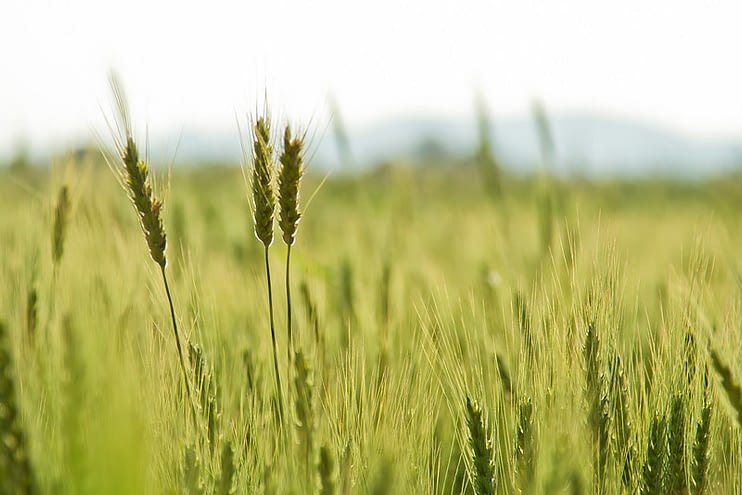May 25, 2021
 Wheat stalks grow in a field in India. (Photo: Saad Akhtar)
Wheat stalks grow in a field in India. (Photo: Saad Akhtar)
For scientists, determining how best to increase wheat yields to meet food demand is a persistent challenge, particularly as the trend toward sustainably intensifying production on agricultural lands grows.
The United Nations projects that the current global population of 7.6 billion will increase to more than 9.8 billion by 2050, making higher grain yield potential vital, particularly as climate instability increases due to global warming. International efforts are also focused on meeting the Zero Hunger target detailed in the UN Sustainable Development Goals before they expire in 2030.
Now, a new landmark research survey on the grain yield potential and climate-resilience of bread wheat (Triticum aestivum L.) has brought scientists a few strides closer to meeting their ambitions.
Grain yield has traditionally been an elusive trait in genomic wheat breeding because of its quantitative genetic control, which means that it is controlled by many genomic regions with small effects.
Challenges also include a lack of good understanding about the genetic basis of grain yield, inconsistent grain yield quantitative trait loci identified in different environments, low heritability of grain yield across environments and environment interactions of grain yield.
To dissect the genetic architecture of wheat grain yield for the purposes of the research, which appeared in Scientific Reports, researchers implemented a large-scale genome-wide association study based on 100 datasets and 105,000 grain yield observations from 55,568 wheat breeding lines developed by the International Maize and Wheat Improvement Center (CIMMYT).
They evaluated the lines between 2003 and 2019 in different sites, years, planting systems, irrigation systems and abiotic stresses at CIMMYT’s primary yield testing site, the Norman E. Borlaug Experimental Research Station, Ciudad Obregon, Mexico, and in an additional eight countries — including Afghanistan, India and Myanmar — through partnerships with national programs.
The researchers also generated the grain-yield associated marker profiles and analyzed the grain-yield favorable allele frequencies for a large panel of 73,142 wheat lines, resulting in 44.5 million data points. The marker profiles indicated that the CIMMYT global wheat germplasm is rich in grain yield favorable alleles and is a trove for breeders to choose parents and design strategic crosses based on complementary grain yield alleles at desired loci.
“By dissecting the genetic basis of the elusive grain-yield trait, the resources presented in our study provide great opportunities to accelerate genomic breeding for high-yielding and climate-resilient wheat varieties, which is a major objective of the Accelerating Genetic Gain in Maize and Wheat project,” said CIMMYT wheat breeder Philomin Juliana.
“This study is unique and the largest-of-its-kind focusing on elucidating the genetic architecture of wheat grain yield,” she explained, “a highly complex and economically important trait that will have great implications on future diagnostic marker development, gene discovery, marker-assisted selection and genomic-breeding in wheat.”
Currently, crop breeding methods and agronomic management put annual productivity increases at 1.2% a year, but to ensure food security for future generations, productivity should be at 2.4% a year.
So, the extensive datasets and results presented in this study are expected to provide a framework for breeders to design effective strategies for mitigating the effects of climate change, while ensuring food-sustainability and security.